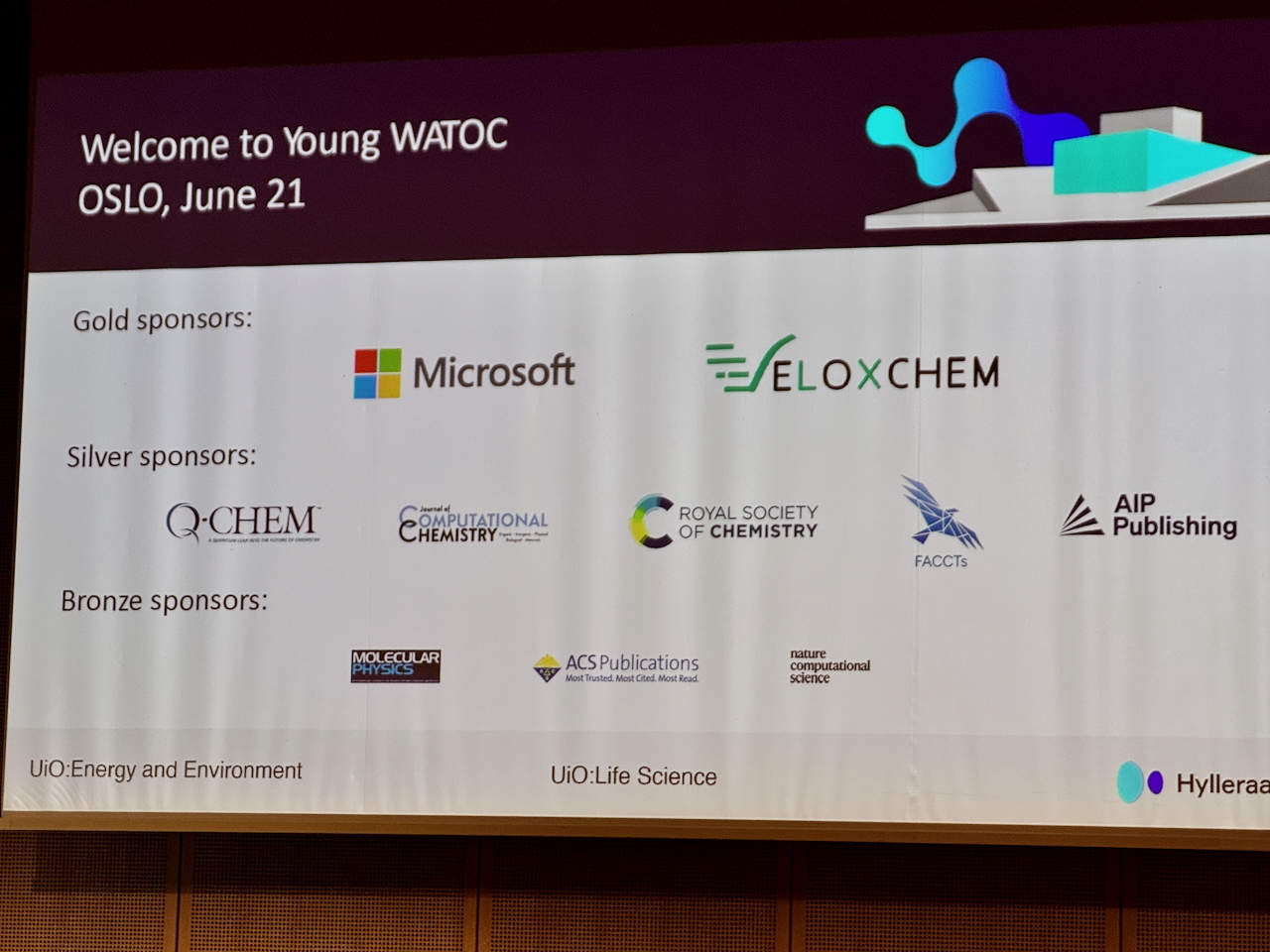This are just a few insights I have got from some of the talks I attended. As usual, this does not represent a report on the WATOC congress itself, but simply some aspects that caught my personal eye. Frank Neese talked about his Bubblepole approximation for large molecules.[cite]10.1021/acs.jpca.4c07415[/cite] And he was not kidding – large.

The WATOC congresses occur every three years. WATOC25, the 13th in a series which started in 1987 takes places tomorrow in Oslo, Norway, The day before the main event there is something new – a session just for early career researchers or “Young WATOC”. As an “old” WATOCer, I dropped into the opening session and was delighted to find a packed auditorium, with literally standing room only comprising mostly young researchers in their 20s.
I am in the process of revising my annual lecture to first year university students on the topic of “curly arrows”. I like to start my story in 1924, when Robert Robinson published the very first example[cite]gg9g[/cite] as an illustration of why nitrosobenzene undergoes electrophilic bromination in the para position of the benzene ring. I follow this up by showing how “data mining” can be used to see if this supports his assertion.
Tom recently emailed me this question: Do you know how to find out how many of the compounds that appear in the chemical literature are mentioned just once? Intrigued, I first set out to find out how many substances , as Chemical Abstracts refers to the them, there were as of 5 June, 2025 . There is a static estimate here (219 million), but to get the most up to date information, I asked CAS directly.
I thought I was done with exploring anomeric effects in small sulfur rings. However, I then realised that all the systems that I had described had an odd number of atoms and that I had not looked at any even numbered rings. Thus hexasulfur is a smaller (known) ring version of S 8 , the latter by far the best known allotrope of this element of course.
Last year I reminisced on the occasion of the 40th Anniversary of the Macintosh computer.[cite]10.59350/f11dr-93t29[/cite] Four decades of advances in technology now mean I can do a fair amount of computational quantum modelling on a recent Mac (one from 2022 with M1 processor), and since then they have only got even (~2 or 3 times) faster with the M4 processor.
In this series of posts about the electronic effects in small sulfur rings[cite]10.59350/rzepa.28615[/cite] I have explored increasingly large induced geometric effects. Here is the largest so far, for the compound S 7 I 1+ [cite]10.1021/ic50225a048[/cite] The calculated geometry[cite]10.14469/hpc/15236[/cite] is shown below, with the crystallographic values in parentheses – the two matching very well.
The two previous posts[cite]10.59350/rzepa.28515[/cite],[cite]10.59350/rzepa.28407[/cite] on the topic of anomeric effects in 7-membered sulfur rings illustrated how orbital interactions between the lone pairs in the molecules and S-S bonds produced widely varying S-S bond lengths in the molecules, some are shorter than normal (which is ~2.05Å for e.g. the S 8 ring) by ~ 0.1Å and some are longer by ~0.24Å.
The monosulfoxide of cyclo-heptasulfur was reported along with cycloheptasulfur itself in 1977,[cite]10.1002/anie.197707161[/cite] along with the remarks that “ The δ modification of S 7 contains bonds of widely differing length: this has never been observed before in an unsubstituted molecule. and “the same effect having also been observed in other sulfur rings (S 8 O, S 7 I 1+ and S 7 O).”
Way back in 1977, the crystal structure of the sulfur ring S 7 was reported.[cite]10.1002/anie.197707151[/cite] The authors noted that “ The δ modification of S 7 contains bonds of widely differing length: this has never been observed before in an unsubstituted molecule. ” No explanation was offered, although they note that similar effects have been observed in S 8 O, S 7 I + and
Back in early 2012, I pondered about the relationships between a science-based blog post and a science-based journal article[cite]10.59350/3pbz1-vcd67[/cite]. This was in part induced by my discovering a blog plugin called Kcite , which allow a journal articles to be appended to the blog in the form of a numbered reference list.
